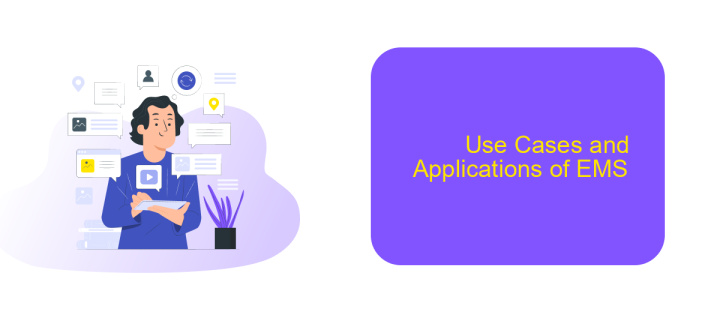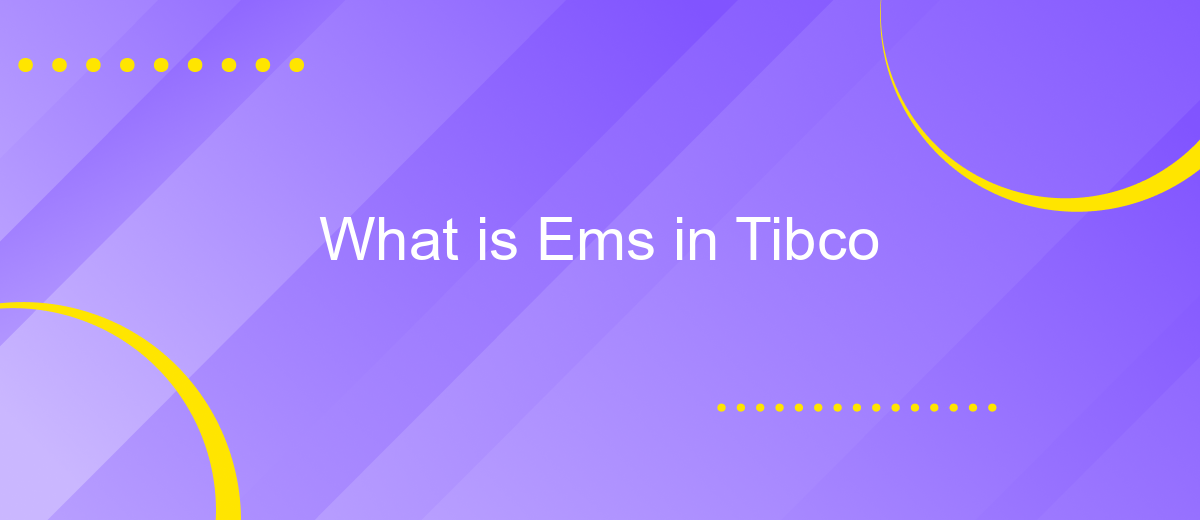What is Ems in Tibco
TIBCO Enterprise Message Service (EMS) is a robust messaging platform that facilitates seamless communication between distributed applications. Leveraging the Java Message Service (JMS) standard, TIBCO EMS ensures reliable and scalable message delivery, making it an essential tool for enterprises aiming to enhance their integration capabilities. This article explores the core features, benefits, and use cases of TIBCO EMS, providing a comprehensive understanding of its role in modern IT environments.
Introduction to EMS
Enterprise Messaging Service (EMS) is a powerful messaging middleware that enables seamless communication between distributed applications. It provides a robust framework for message exchange, ensuring reliable and scalable data transfer across different systems. EMS plays a crucial role in modern enterprise architectures by facilitating integration and improving operational efficiency.
- Reliable message delivery
- Scalable architecture
- Support for multiple messaging models
- Enhanced security features
- Seamless integration with other systems
In the context of integration, services like ApiX-Drive can be incredibly beneficial. ApiX-Drive simplifies the process of connecting various applications and automating workflows, thereby enhancing the capabilities of EMS. By leveraging ApiX-Drive, organizations can streamline their operations, reduce manual interventions, and ensure that data flows smoothly between different systems, making EMS even more effective.
Architecture and Components of EMS

The architecture of TIBCO Enterprise Message Service (EMS) is designed to facilitate reliable and scalable message-oriented middleware. At its core, EMS consists of the EMS server, which handles message routing, delivery, and storage, and the EMS clients, which are applications that produce and consume messages. The EMS server supports various messaging models, including point-to-point and publish/subscribe, ensuring flexibility in message distribution. Additionally, EMS leverages the Java Message Service (JMS) API, providing a standardized interface for messaging operations, which enhances interoperability between different systems and applications.
Key components of EMS include destinations (queues and topics), which are logical channels for message delivery, and message stores, which ensure message persistence and reliability. For seamless integration with other services and applications, tools like ApiX-Drive can be utilized. ApiX-Drive simplifies the process of connecting EMS with various external systems by providing pre-built connectors and an intuitive interface for configuring integrations. This enables organizations to automate workflows and ensure efficient data exchange across different platforms, enhancing overall operational efficiency and reducing manual efforts.
Key Features and Benefits of EMS

TIBCO Enterprise Message Service (EMS) is a robust messaging platform designed to facilitate seamless communication between disparate applications and systems. It ensures reliable message delivery, scalability, and high performance, making it an essential tool for modern enterprises.
- Reliability: EMS guarantees message delivery through persistent storage and acknowledgment mechanisms.
- Scalability: It supports horizontal scaling, allowing businesses to handle increased loads efficiently.
- Security: EMS provides robust security features, including SSL/TLS encryption and access control.
- Integration: EMS can be easily integrated with various systems and applications, including through services like ApiX-Drive, which simplifies the integration process.
- Performance: High throughput and low latency ensure optimal performance for critical business operations.
By leveraging TIBCO EMS, organizations can improve their operational efficiency, ensure data integrity, and enhance their overall system reliability. The integration capabilities with tools like ApiX-Drive further streamline processes, making it easier to connect diverse systems and automate workflows.
Use Cases and Applications of EMS

TIBCO Enterprise Message Service (EMS) is widely utilized across various industries to ensure reliable and scalable messaging solutions. One primary use case is in financial services, where EMS facilitates secure and efficient communication between different systems, ensuring real-time transaction processing and monitoring.
In the healthcare sector, EMS is employed to integrate disparate systems, enabling seamless data exchange and improving patient care by providing timely access to critical information. Additionally, EMS is instrumental in supply chain management, offering robust messaging capabilities that enhance coordination and visibility across the supply chain network.
- Financial Services: Real-time transaction processing and monitoring.
- Healthcare: Integration of systems for improved patient care.
- Supply Chain Management: Enhanced coordination and visibility.
- Telecommunications: Reliable message delivery and system integration.
- Retail: Streamlined inventory management and customer service.
Moreover, services like ApiX-Drive can be leveraged alongside TIBCO EMS to streamline integrations further. ApiX-Drive offers a user-friendly platform for automating data flows between various applications, enhancing the overall efficiency and reducing the complexity of integration processes.
Comparison of EMS with Other Messaging Technologies
TIBCO EMS (Enterprise Message Service) is a robust messaging technology that offers seamless integration capabilities and reliable message delivery. Compared to other messaging technologies such as Apache Kafka, RabbitMQ, and IBM MQ, TIBCO EMS stands out for its strong support for JMS (Java Message Service) and its ability to handle high-throughput, low-latency messaging. While Kafka excels in real-time data streaming and RabbitMQ is known for its ease of use and flexibility, TIBCO EMS provides a more comprehensive solution for enterprise-level applications that require guaranteed message delivery and robust transaction management.
When it comes to setting up integrations and managing complex workflows, TIBCO EMS can be effectively complemented by services like ApiX-Drive. ApiX-Drive simplifies the process of connecting various applications and automating data transfers, making it easier for businesses to integrate TIBCO EMS with other systems. This service supports a wide range of applications and can help streamline the integration process, ensuring that data flows smoothly across different platforms. By leveraging ApiX-Drive, organizations can enhance their messaging infrastructure, reduce manual intervention, and improve overall operational efficiency.
- Automate the work of an online store or landing
- Empower through integration
- Don't spend money on programmers and integrators
- Save time by automating routine tasks
FAQ
What is TIBCO EMS?
What are the core features of TIBCO EMS?
How does TIBCO EMS ensure message reliability?
Can TIBCO EMS be integrated with other systems?
What are the use cases for TIBCO EMS?
Do you want to achieve your goals in business, career and life faster and better? Do it with ApiX-Drive – a tool that will remove a significant part of the routine from workflows and free up additional time to achieve your goals. Test the capabilities of Apix-Drive for free – see for yourself the effectiveness of the tool.


